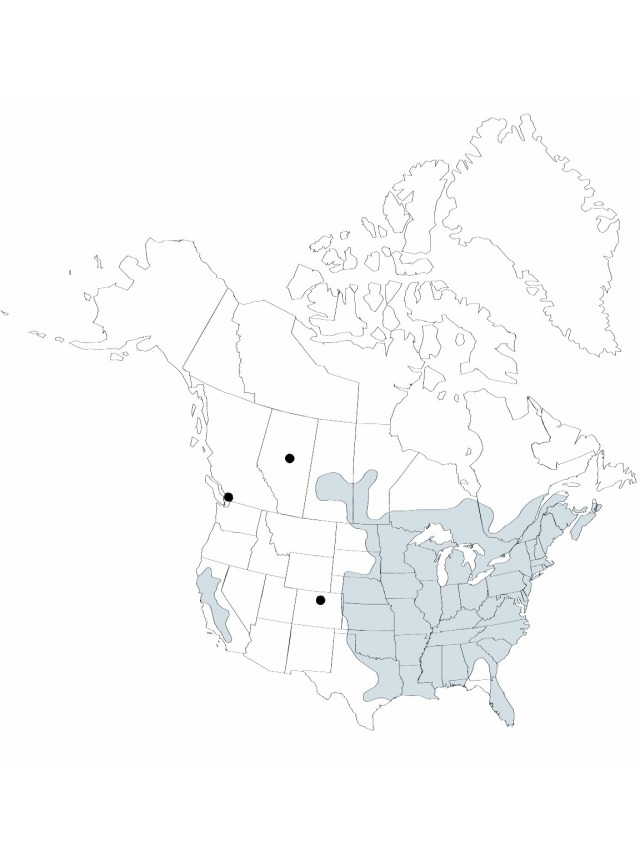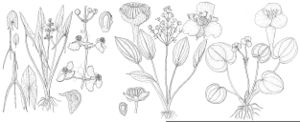Sagittaria latifolia
Sp. Pl. 4(1): 409. 1805.
Herbs, perennial, to 45 cm; rhizomes absent; stolons present; corms present. Leaves emersed; petiole triangular, erect to ascending, 6.5–51 cm; blade sagittate, rarely hastate, 1.5–30.5 × 2–17 cm, basal lobes equal to or less than remainder of blade. Inflorescences racemes, rarely panicles, of 3–9 whorls, emersed, 4.5–28.5 × 4–23 cm; peduncles 10–59 cm; bracts connate more than or equal to ¼ total length, elliptic to lanceolate, 3–8 mm, delicate, not papillose; fruiting pedicels spreading, cylindric, 0.5–3.5 cm. Flowers to 4 cm diam.; sepals recurved to spreading, not enclosing flower or fruiting head; filaments cylindric, longer than anthers, glabrous; pistillate pedicellate, without ring of sterile stamens. Fruiting heads 1–1.7 cm diam; achenes oblanceoloid, without abaxial keel, 2.5–3.5 × to 2 mm, beaked; faces not tuberculate, wings absent, glands (0–) 1 (–2); beak lateral, horizontal, 1–2 mm. 2n = 22.
Phenology: Flowering summer–fall.
Habitat: Wet ditches, pools, and margins of streams and lakes
Elevation: 0–1500 m
Distribution

Alta., B.C., Man., N.B., N.S., Ont., P.E.I., Que., Sask., Ala., Ark., Calif., Colo., Conn., Del., D.C., Fla., Ga., Ill., Ind., Iowa, Kans., Ky., La., Maine, Md., Mass., Mich., Minn., Miss., Mo., Nebr., N.H., N.J., N.Y., N.C., N.Dak., Ohio, Okla., Pa., R.I., S.C., S.Dak., Tenn., Tex., Vt., Va., W.Va., Wis., c, s Mexico, Central America (Guatemala), South America (Colombia), South America (Ecuador), South America (Venezuela)
Discussion
Sagittaria latifolia has been divided into numerous species and varieties. It was divided into two varieties, based upon the presence of pubescence over the entire vegetative plant (C. Bogin 1955; K. Rataj 1972). We have examined numerous specimens and found that many from the southeastern United States are pubescent; we believe that this character alone is insufficient for recognition of the varieties.
Selected References
None.
